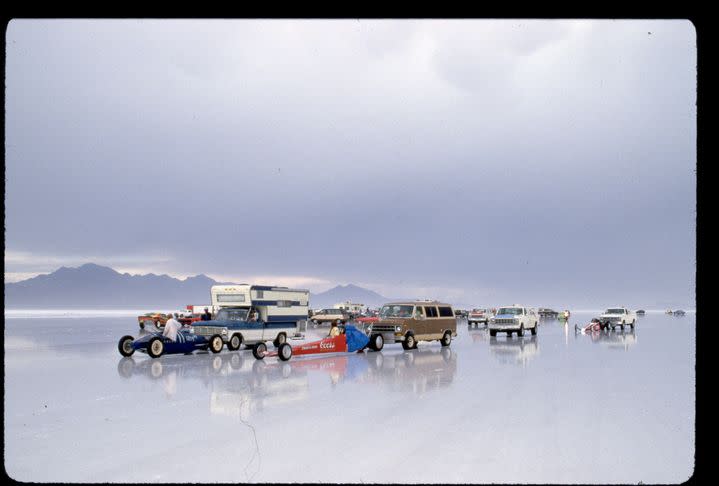Is It Too Late to Save the Bonneville Salt Flats?

Thousands of years ago, a giant body of salty water called Lake Bonneville covered much of the state of Utah, the remnants of which make up the Great Salt Lake as well as the Bonneville Salt Flats.
For close to a hundred years, racers have used the concrete-hard flats for land speed record runs, its miles and miles of expanse allowing for vehicles to reach upwards of 600 mph.
Today, however, the salt on the flats is a fraction of the thickness it was at its peak, as factors including nearby potash mining have threatened its viability.
You can’t blame everything on potash mining.
In pre-historic, pre-human, and pre-Bonneville Speed Week times, there was a body of water in western Utah known as Lake Bonneville. It was huge. If you look up at the mountains surrounding what are now the Bonneville Salt Flats, home of the greatest land speed racing the world has ever known, you can still see ancient shorelines hundreds of feet above the burning white flatness. Then, 16,800 years ago—geologists are very precise on this—something let loose and almost all of Lake Bonneville drained out into what is now southern Idaho.
This was both good and bad. Bad if you were an ancient dino-shark eating as many fish as you felt like eating all day long only to find yourself in what would become an Idaho potato field (oh, how the mighty always fall!), but good if you were a land speed racer.
Since the great draining of Lake Bonneville those tens of thousands of years ago, the remnants of the once-great lake literally ebbed and flowed. But in “modern times,” the lake remnants became what is now known as Great Salt Lake, the one by Salt Lake City, and the Bonneville Salt Flats a hundred miles west of that. Over the last hundred years or so the Bonneville Salt Flats have mostly dried up and left a hard surface miles and miles long that is just perfect for flooring the throttle and seeing what your race car can really do.

The first racing may have taken place as early as 1914. Ab Jenkins set records on the flats in the 1930s in a car called The Mormon Meteor. Successive racers came over the decades and set their own records, perhaps the greatest being the competing duo of Art Arfons and Craig Breedlove in the early ‘60s, who moved the record over 500 and 600 mph. In between those great high-water marks were hundreds of home-grown racers driving self-engineered craft of all manner to land speed records.
When racing first started at Bonneville the salt was as much as six feet thick and seemed like it would never go away. Winter rains would flow onto the salt, bringing replenishing minerals from the hills, and the salt got thicker. In the summer the rainwater would dry up, the surface of the salt would get hard as concrete, and the racers would come and race.
The mining started in 1917 during WWI, when the country’s previous supply of potash, from Germany, dried up because of the war. Mineral extraction really got going in 1963, according to local media outlet Deseret News.
“(In) 1963… the Bureau of Land Management leased 25,000 acres to Bonneville Ltd., a private mining company,” Deseret said. “By 1979, the Utah Geological and Mineral Survey’s salt drilling measurements indicated that the flats were shrinking. The salt crust became thin and easy to puncture. In 1960, the salt on the International Speedway was multiple feet deep. In May 2021, it was a quarter of an inch thick.”
Originally covering 96,000 acres when someone first measured it, the Bonneville Salt Flats are now less than 30,000. At least one third of the shrinkage is due to mineral extraction, mostly potash, potassium-rich salts that are used as fertilizer.
“A century ago, there was plenty of thick hard salt as far as the eye could see,” said an organization of racers called savethesalt.org. “As the years unwound, the damning game of give and take, the salt giving and man taking, knocked the natural balance out of whack, causing the salt surface to not only thin, but the perimeter to slowly shrink... The land speed racing community is now facing a daunting ecological emergency.”

 Yahoo Autos
Yahoo Autos 